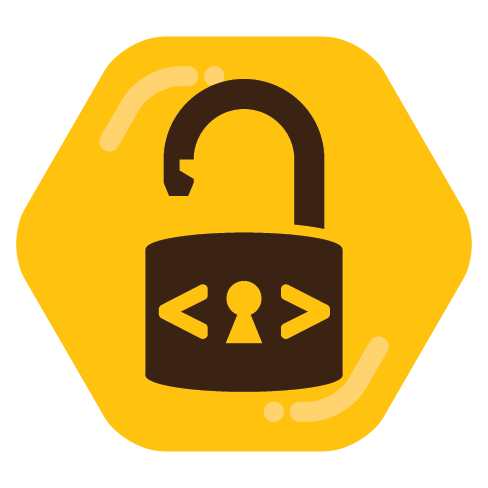

Isn’t that going to be ruinously expensive to host an instance for? Video is expensive in terms of storage and bandwidth.


Isn’t that going to be ruinously expensive to host an instance for? Video is expensive in terms of storage and bandwidth.


Pandoc does allow you to make “github styled” PDFs and HTML from markdown, can confirm! It doesn’t have any of the widgets, but the text formatting looks the same.


Uhhh is that not pretty much the definition of a “tech megacorp”?


I actually use GIMP regularly these days, I found Scribus harder. Yes, Inkscape is more friendly. It doesnt follow the Adobe paradigm, but it’s pretty quick to learn and is closer to the Adobe layout than other software.
The only thing that’s kinda funky in Inkscape is cropping, which is done via “clipping”, using another polygon to mask the component below. The selectable image stays the same size (but mostly invisible), making automatic alignment kinda annoying. However, thats for bitmap images, and Inkscape is meant to be vector-first, so that’s not the end of the world.


Ive tried Scribus, and found the interface very hard to get used to. For folks coming from Adobe, I find Inkscape the easiest for design. I would use a separate program for cropping, I don’t have a great recommendation for that.


Ummm or the authors are concerned about retribution because stallman and the FSF are very powerful in the FOSS community, and I think it’s reasonably likely that they would be sued (seemingly with poor grounds) or harassed online for publishing it.


Huh I did not realize that. Is that an NTFS vs. EXT4 thing?


Ive noticed that for some reason it launches in 1-2 seconds on Linux Mint as opposed to like 10 on Windows for some reason. Seems weird, since based on the status messages it seems like the rate limiting step is opening a bunch of Python modules, which shouldn’t be drastically different between OSes??


Does anyone know why the only public transport option is “subway”? I don’t get why they would only index subways.


Yeah…Eternity 0.2.1 doesn’t work, Voyager can’t even find beehaw.org in to log into it, and so I’ve been using Jerboa as a backup. Turns out downgrading to 0.1.2 does work, but meh.


Darktable if you’re ok with a steep learning curve, RawTherapee if you prefer an easier-to-use UI with a few less features.


I use zettlr – it’s pretty good! The only issues I’ve run into are with the table editor, and with occasional lag on large documents; the latter just comes with the territory on an Electron app. I know Nathan’s working on both, though.


Start by running vim and typing :vimtutor. You might have to install the vimtutor package. Its a good way to learn. Once you’re through the vimtutor tutorial you should be good to go, you’ll get better over time. I second recommending neovim over original vim. The command is nvim to start once installed.


It’s possible that there’s a reason it requires lossless audio, in that it requires uncompressed signal to work. For instance, if the ML model is trained on uncompressed data, it may need audio which has never been compressed.


Just a comment – for InDesign-type work, I find something like Inkscape (or Scribus) easier to work with than LaTeX. I usually only use LaTeX for things where the layout needs to be pretty but not customized. Its possible to use it for design, but not a good use of time.


Man, I tried to learn FreeCAD, but coming from the Inventor/Solidworks paradigm it was hard.


Yeah I remember that conspiracy theory. Iirc, the claim was basically that any company which had any relationship with any US institution must be a honeypot. It was pretty out there, and as far as I’m aware it was very much debunked.
I’m pretty sure that the Google libraries F-droid are things like the push notification service, which afaik almost anything with notifications uses, even signal.
I’ve never actually compiled from source, but AFAIK they are open source. Its been convenient to use for me, just make very sure you don’t lose your password!


If you’re OK with using inkscape and GIMP, if the background color is different than the chicken, you could apply a color filter to simplify the image to “chicken” and “not chicken” (basically, reduce the number of total colors to 16 or less), then use inkscape Trace Bitmap in Colors mode.
Tracing a bitmap to an SVG is really only practical if it’s a line drawing or if it has less than 16 (preferably less than 8) colors, because each color becomes a different vector object. Its really not intended for full on photos, unfortunately.


The LunarVim install process can be kinda a pain to start, but I find it fills a wierd spot between neovim and vsodium – I still use nvim for making quick edits to files (especially in compiled languages) but still use vscode for really big multifile projects. LunarVim just takes too long to boot to be a drop-in neovim replacement, and the file explorer is too unintuitive to use for many files simultaneously, even as a longtime vim user. I like LunarVim, but I think it has its own usability niche, and I dont find myself using it as much as I’d like.
Quite frankly, base neovim is still pretty functional for me, but the complexity of installing extensions just encourages me to use it as a text editor rather than an IDE, which is largely fine by me.
AntennaPod is better than it has any right to be – on a modern device, it’s super smooth.